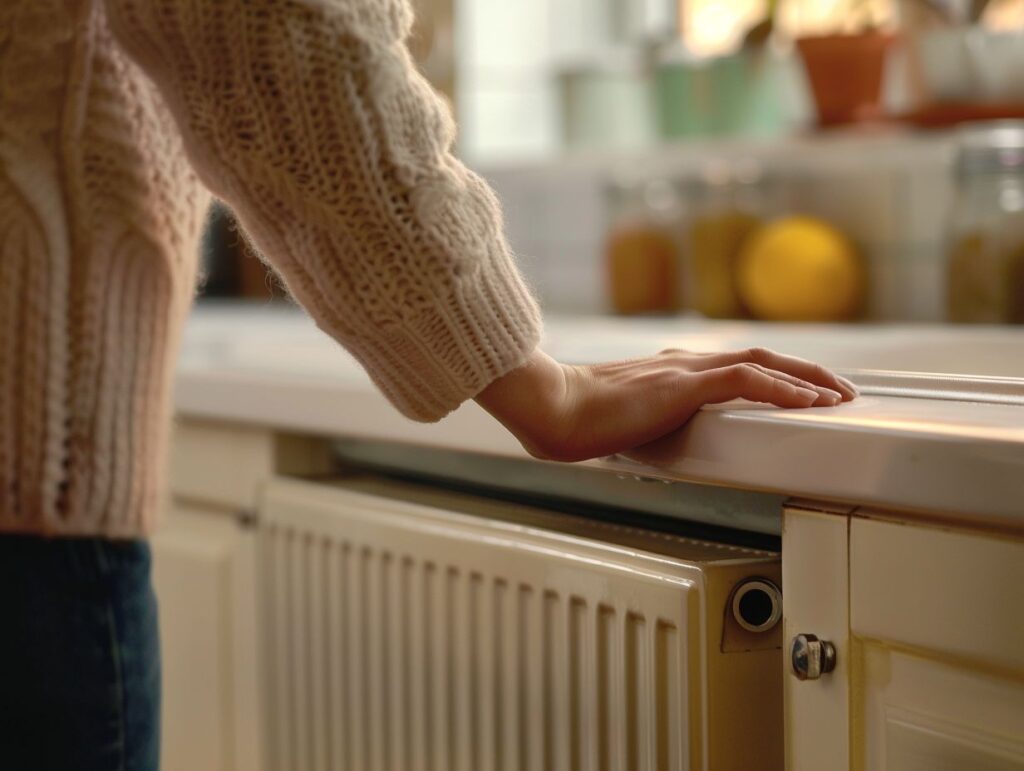If you have ever found yourself questioning the inadequate warmth provided by your kitchen radiator, you are not alone.
This exploration will delve into the function and significance of kitchen radiators, along with potential causes of a cold radiator. From air entrapment in the system to obstructed pipes or valves, methods for troubleshooting and rectifying a cold kitchen radiator will be discussed.
Maintenance suggestions and techniques will be provided to preempt future problems. Ensure your kitchen remains cozy and comfortable by implementing these insights.
Key Takeaways:
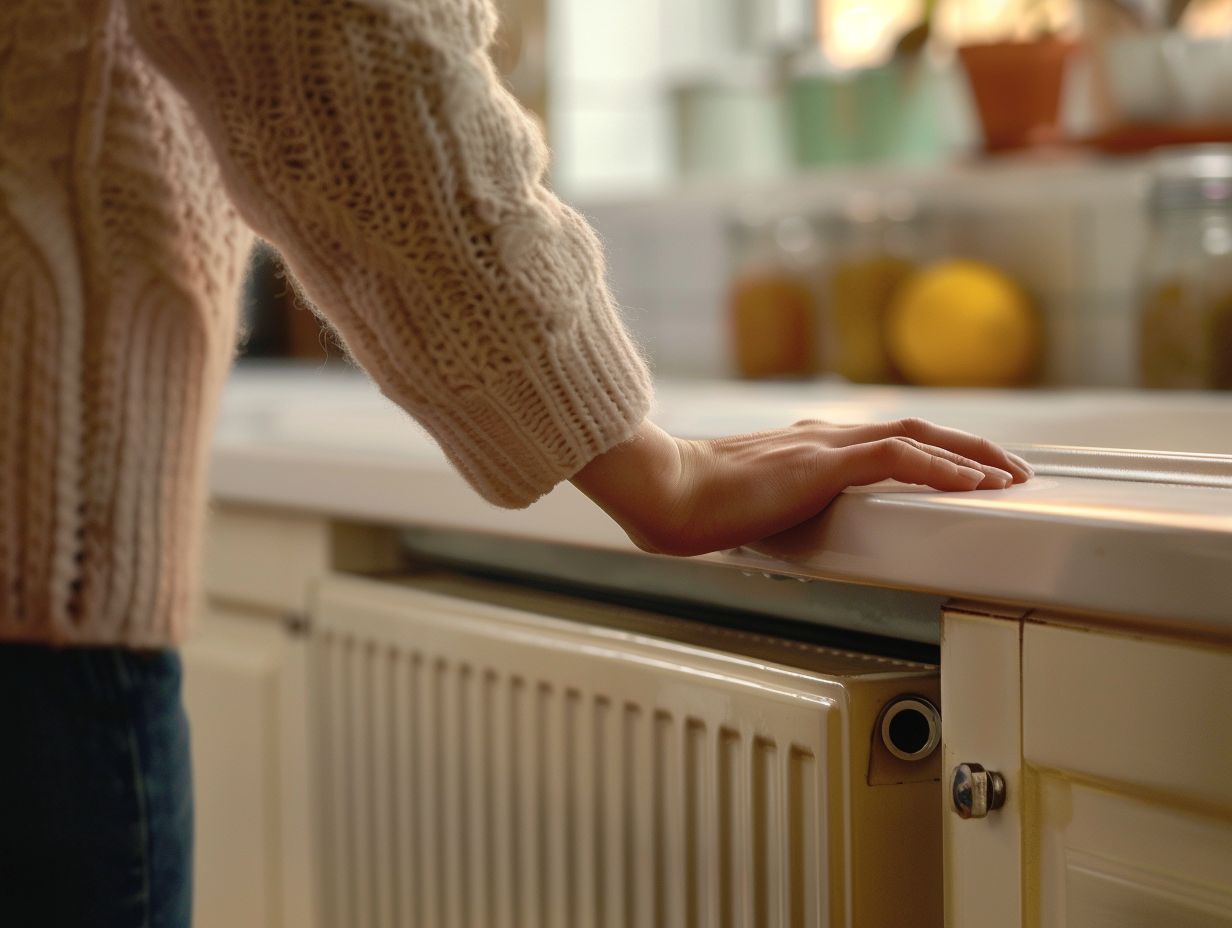
- Keep an eye on your kitchen radiator’s function and importance to avoid potential issues.
- Air trapped in the system, blocked pipes or valves, and a malfunctioning thermostat could be the culprits behind a cold kitchen radiator.
- Bleeding the radiator, checking for blockages, and adjusting the thermostat are simple troubleshooting steps to fix a cold kitchen radiator.
Possible Reasons for a Cold Kitchen Radiator
When faced with a cold kitchen radiator, you must consider various factors that could be causing the issue and disrupting the normal flow of warmth and comfort in your kitchen. Identifying the root cause is essential to restoring efficient heating.
Among the common reasons for a cold kitchen radiator are issues with water flow, which can impede the circulation of warm water through the radiator. Malfunctions within the heating system, such as a faulty pump or thermostat, could result in inadequate heat distribution. Additionally, air trapped within the radiator can also hinder proper heating.
Thorough checking is necessary, including examining water pressure, bleeding the radiator, and inspecting the heating system components. This process is crucial in pinpointing the exact cause of the problem and resolving it effectively.
Air Trapped in the System
Air trapped in your heating system can lead to cold radiators, affecting the overall warmth in your kitchen. It’s crucial to properly bleed the radiator to remove trapped air and restore efficient heating.
When air becomes trapped in your heating system, it creates pockets that obstruct the flow of hot water through the radiators. This results in uneven heating distribution and decreased efficiency in warming up your space. Bleeding the radiator involves releasing the trapped air by opening a valve to allow it to escape.
Regular maintenance, including bleeding the radiators, is essential to prevent air-related heating issues and maintain a comfortable temperature throughout your house. By ensuring proper air ventilation in your system, you can optimise your heating system’s performance and avoid unnecessary energy wastage.
Blocked Pipes or Valves
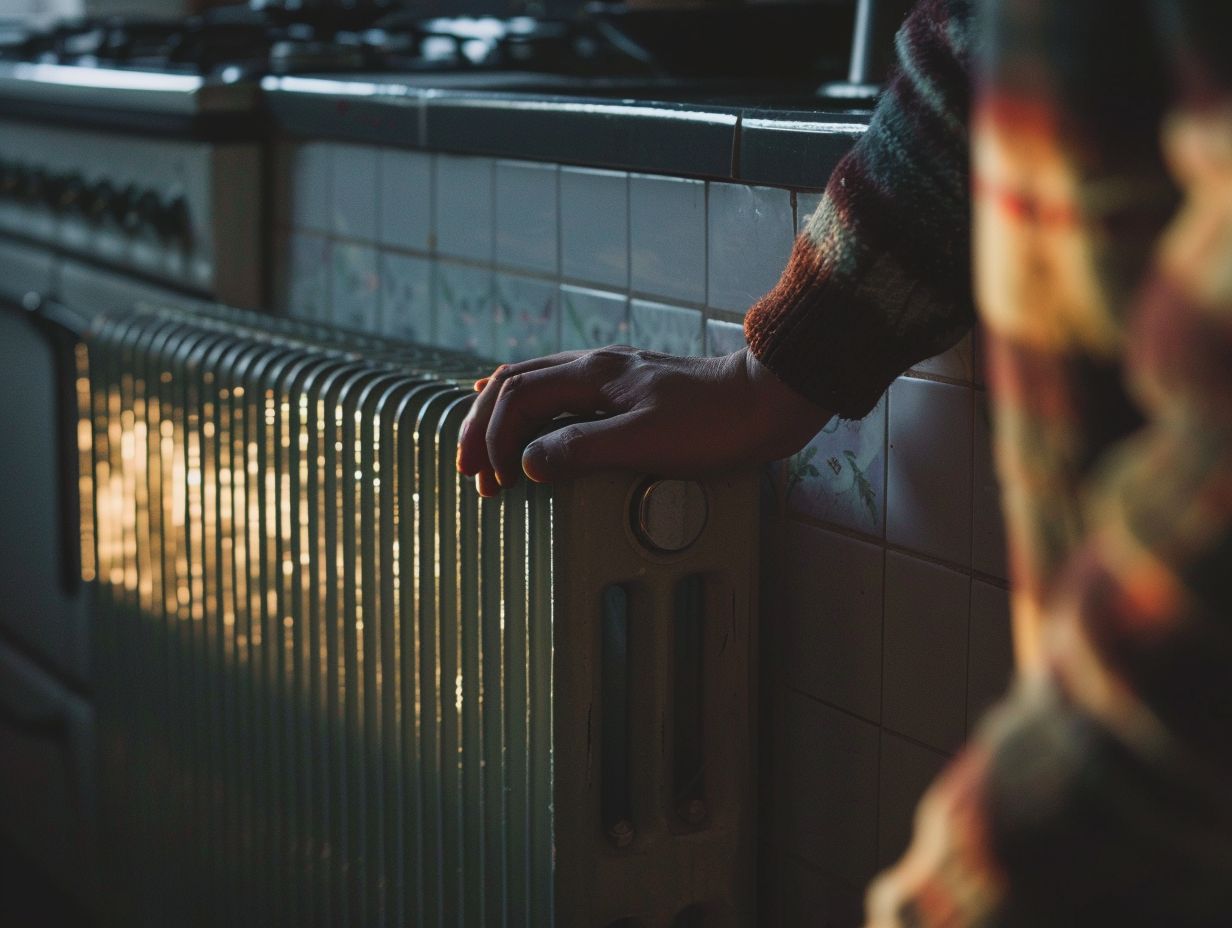
Blocked pipes or valves in your kitchen radiator system can impede the smooth flow of hot water, causing some radiators to remain cold. It is crucial to address and remove any blockages to restore proper heating functionality in your kitchen.
A clear indication of a blocked pipe or valve in the radiator system is when certain radiators in your kitchen feel cold while others are warm. This disparity suggests a problem with the circulation of hot water.
To troubleshoot this issue, begin by inspecting the pipes and valves for any obstructions or build-up. Accumulation of rust, debris, or mineral deposits can restrict the flow of water over time. In such instances, carefully eliminating the blockage or seeking professional assistance to clean and flush the system may be necessary.
By ensuring a clear passage for hot water, you can maintain consistent warmth throughout your kitchen.
Malfunctioning Thermostat
A malfunctioning thermostat can disrupt the heating cycle of kitchen radiators, causing inconsistencies in temperature regulation.
It is crucial for you to check and calibrate the thermostat regularly in order to maintain optimal heating performance. Without proper calibration, a faulty thermostat may lead to rooms being overly hot or uncomfortably cold.
Regular maintenance not only ensures accurate temperature control but also extends the lifespan of the heating system. Troubleshooting thermostat issues such as incorrect readings or unresponsive controls can often be resolved by replacing batteries or cleaning the device.
Understanding how the thermostat operates and being aware of potential issues can help you troubleshoot effectively and enjoy consistent warmth throughout your living spaces.
How to Troubleshoot and Fix a Cold Kitchen Radiator
When troubleshooting and rectifying a cold kitchen radiator, a systematic approach is essential to pinpoint and resolve the root causes affecting its heating functionality. By adhering to specific steps, you can reinstate warmth and comfort to your kitchen area.
- Begin by bleeding the radiator to expel any trapped air that may be contributing to the cold areas. Utilise a radiator key to open the valve slightly until a hissing noise is audible, then promptly close it once water flow initiates.
- Subsequently, inspect the pipes for any blockages by detecting cold sections along the radiator’s length. If there are any obstructions present, consider using a pipe cleaner to eliminate them.
- Confirm that the thermostat settings are configured correctly to achieve the desired temperature for efficient heating.
Bleeding the Radiator
Bleeding the radiator is a common maintenance task that can help release trapped air, restore proper water flow, and improve heat distribution. Understanding how to bleed radiators effectively is crucial for addressing heating issues.
One of the primary indicators that it’s time to bleed the radiators is when you notice that the top of a radiator feels cold while the bottom remains hot. This contrast suggests that trapped air is impeding the proper circulation of heat within the system.
To initiate the bleeding process, it is important to first switch off the heating system to prevent any heat-related accidents. Then, using a radiator key or a flat screwdriver, slowly turn the valve at the top of the radiator anti-clockwise while ensuring a cloth or bucket is placed underneath to catch any water that may spill out.
It is recommended to bleed radiators in a systematic manner, starting from the lowest floor level and progressing upwards, to ensure that all trapped air is released. Once all radiators have been bled, it is advisable to check the pressure gauge on the boiler to confirm that it is at the recommended level.
By following these steps, you can optimise the efficiency of your heating system and maintain a comfortable home environment.
Checking for Blockages
Checking for blockages in your kitchen radiator system is crucial to ensure unrestricted water flow and efficient heating. Identifying and removing blockages can prevent cold spots and restore optimal radiator performance.
Regular checks for blockages are essential for maintaining the proper functioning of radiators, as they can frequently become blocked due to various reasons such as sludge buildup or debris accumulation. These blockages can hinder the flow of hot water through the system, leading to uneven heating.
By conducting periodic inspections, homeowners can detect these issues early and take steps to address them promptly. Clearing out any blockages allows for consistent and effective heating, ensuring a comfortable environment in your home.
Adjusting the Thermostat
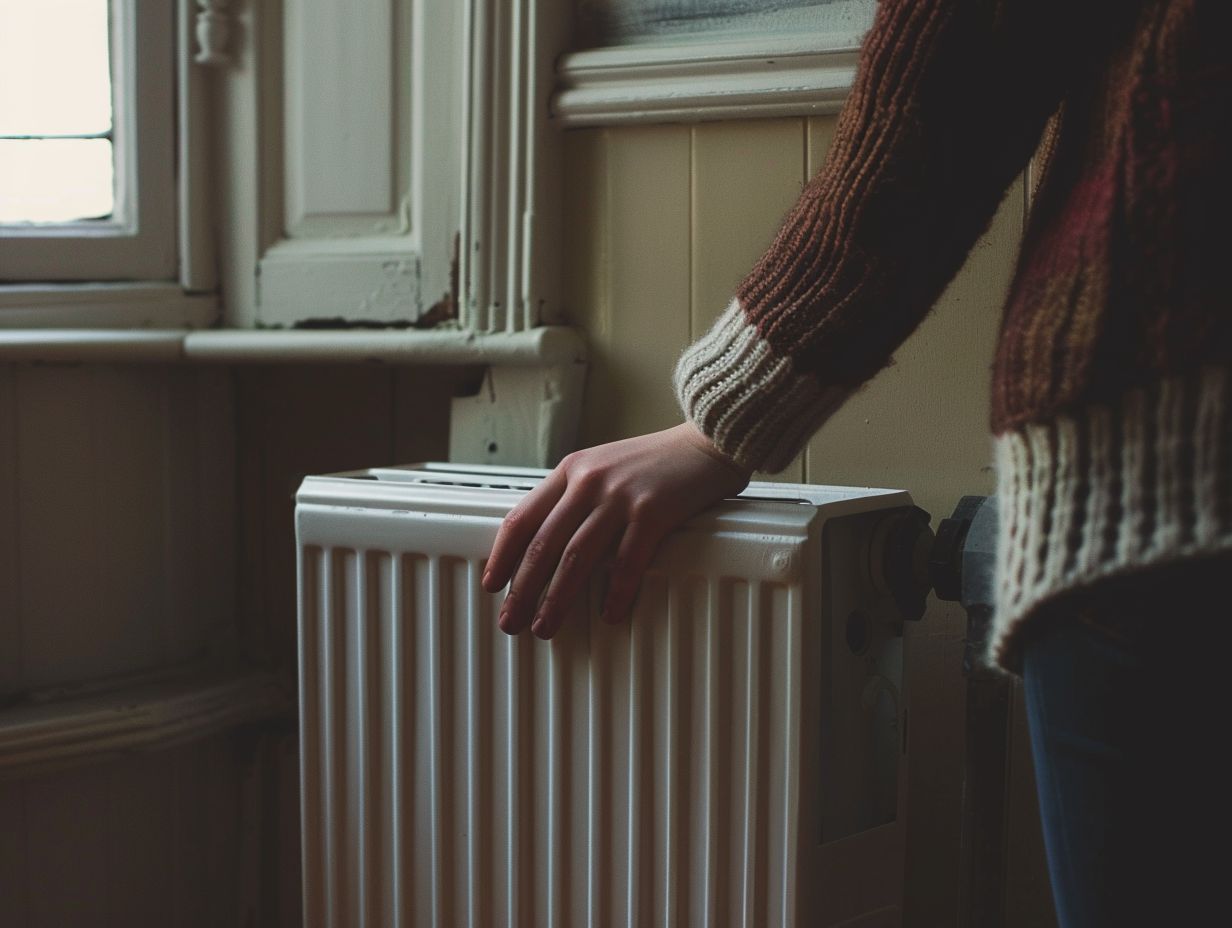
Calibrating and adjusting your thermostat settings can optimise the heating output of your kitchen radiators, ensuring a consistent level of warmth and comfort. Proper thermostat management is crucial for maintaining an ideal kitchen environment.
By strategically adjusting your thermostat, you can control the heat output of your radiators, resulting in energy savings and increased efficiency.
It is essential to set your thermostat to the desired temperature, typically ranging from 20-22 degrees Celsius for most households, and avoid sudden temperature changes that can lead to unnecessary energy usage.
Regular calibration of your thermostat ensures an accurate reflection of the room temperature, allowing for precise control and a dependable heating system.
Preventing a Cold Kitchen Radiator
Preventing a cold kitchen radiator involves proactive maintenance and adherence to essential tips to ensure continuous warmth and efficiency. By following preventative measures, you can avoid sudden heating issues and enjoy a cosy kitchen environment.
Regular checks of your heating system components can help detect any potential problems early on, allowing you to address them before they escalate. Engaging professional plumbers for periodic inspections and tune-ups can significantly enhance the performance and lifespan of your radiator.
Implementing effective heating system care routines, such as bleeding radiators and cleaning filters, is vital in maintaining optimal functionality. These proactive measures not only prevent cold kitchen radiators but also contribute to uninterrupted heating comfort and energy efficiency in your home.
Maintenance Tips and Tricks
Regular maintenance is crucial to keep your kitchen radiators operating at their best and prevent any cold patches. Seeking guidance from a plumber or heating engineer for professional assessments and upkeep can help spot problems early and ensure your heating system runs efficiently.
Setting up a routine for bleeding your radiators is essential to release any trapped air, which can enhance heat distribution. It’s also important to regularly check your radiator valves for leaks or blockages to maintain their effectiveness.
It’s advisable to bleed your radiators at least once annually to avoid air accumulation. Consider hiring a heating engineer or plumber to perform thorough inspections and servicing to address any underlying issues and optimise the overall functionality of your kitchen radiators.
Frequently Asked Questions
Why Is My Kitchen Radiator Cold?
There could be several reasons why your kitchen radiator is not getting warm. It could be due to a lack of hot water flow, air trapped in the system, or a malfunctioning thermostat.
How can I tell if my kitchen radiator has air trapped in it?
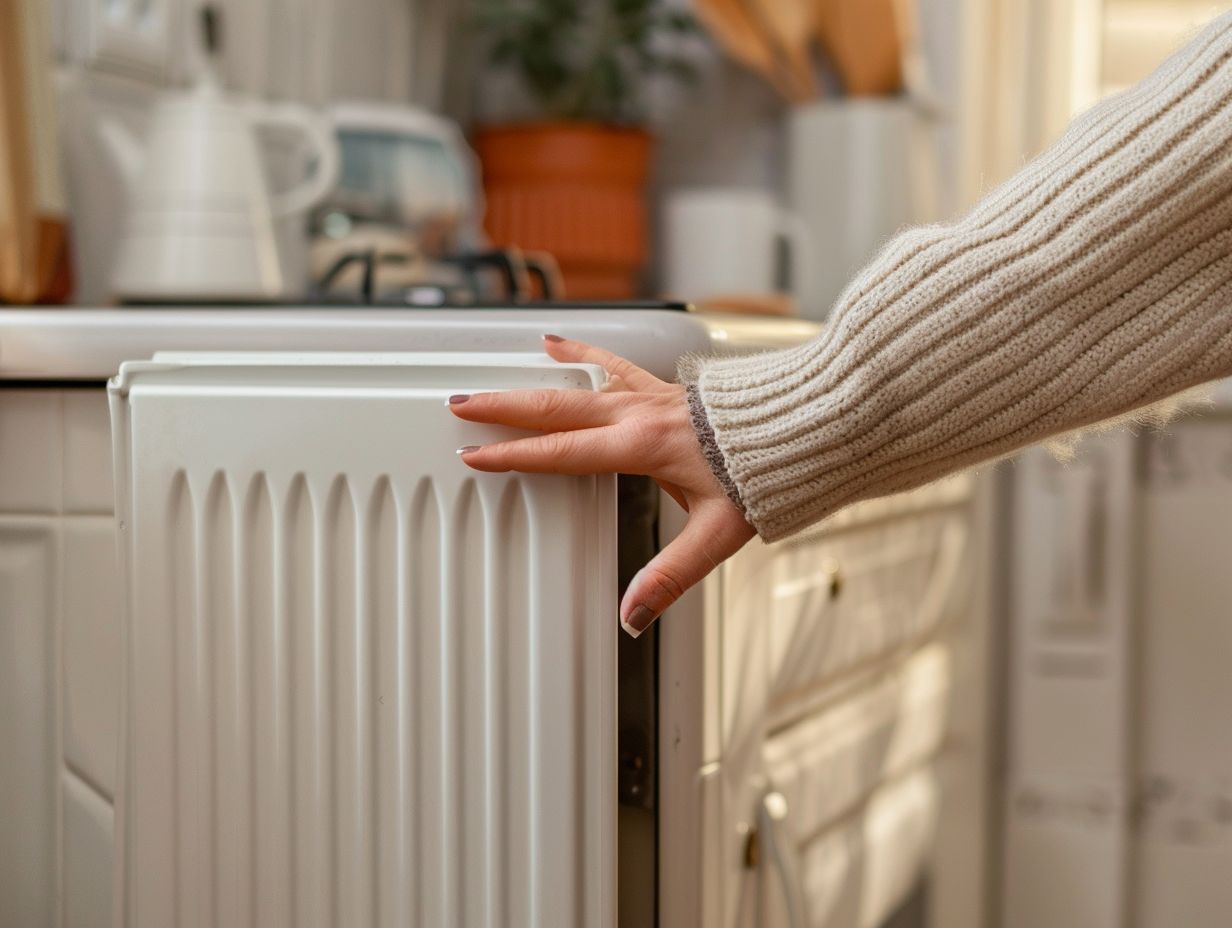
If the top of your kitchen radiator is warm but the bottom is cold, that is a sign that air is trapped inside. You can bleed your radiator to release the air and restore proper circulation.
Why is there no hot water flow to my kitchen radiator?
If there is no hot water flow to your kitchen radiator, it could be due to a blockage in the pipes, a malfunctioning pump, or a problem with the boiler. It is best to consult a professional for a proper diagnosis.
How can I fix a cold kitchen radiator?
If your kitchen radiator is cold, you can try bleeding it to release any trapped air. If that does not work, check for any blockages in the pipes and make sure the thermostat is working properly. If the issue persists, it is best to seek help from a certified technician.
Can a cold kitchen radiator cause my heating bills to increase?
Yes, a cold kitchen radiator can affect the efficiency of your heating system, causing it to work harder and therefore increasing your heating bills. It is important to address any issues with your radiator to ensure proper heating and cost savings.
How often should I bleed my kitchen radiator?
It is recommended to bleed your kitchen radiator at least once a year to release any trapped air and improve its performance. However, if you notice any issues with your radiator, it is best to address them as soon as possible.

